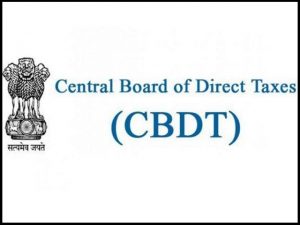Table of Contents
Daily Current Affairs for Government Exams:
Today Current Affairs:20th April 2020 for UPSC IAS exams, State PSC exams, SSC CGL, State SSC, RRB, Railways, Banking Exam & IBPS, etc
Contents:
- List of Intangible Cultural Heritage (ICH) of India
- New FDI Rule
- Islamophobia:
- Blazars
- Lithium Abundance in Interstellar Space
- Section 115 BAC
- the model that will predict the electronic density of the ionosphere
- UN Chinese Language Day
- Other important current affairs
1.List of Intangible Cultural Heritage (ICH) of India:

Ministry of Culture has launched the National List of Intangible Cultural Heritage (ICH) of India.
- The National ICH List is an attempt to recognize the diversity of Indian culture embedded in its intangible heritage.
- This initiative is also a part of the Vision 2024 of the Ministry of Culture.
- As of now, the list has more than 100 elements.
- It also includes the 13 elements of India that have already been inscribed on the UNESCO Representative List of the Intangible Cultural Heritage of Humanity.
Following UNESCO’s 2003 Convention for Safeguarding of Intangible Cultural Heritage, this list has been classified into five broad domains in which intangible cultural heritage is manifested:
- Oral traditions and expressions, including language as a vehicle of the intangible cultural heritage;
- Performing arts;
- Social practices, rituals, and festive events;
- Knowledge and practices concerning nature and the universe;
- Traditional craftsmanship.
UNESCO’s List of Intangible Cultural Heritage:
- The list is made up of those intangible heritage elements that help demonstrate the diversity of cultural heritage and raise awareness about its importance.
- The list was established in 2008 when the Convention for Safeguarding of the Intangible Cultural Heritage came into effect.
India the Intangible Cultural Heritages added into this list include:
- The tradition of Vedic chanting
- Ramlila, the traditional performance of the Ramayana
- Kutiyattam, Sanskrit theatre
- Ramman, religious festival and ritual theatre of the Garhwal Himalayas.
- Mudiyettu, ritual theatre and dance drama of Kerala
- Kalbelia folk songs and dances of Rajasthan
- Chhau dance
- Buddhist chanting of Ladakh: the recitation of sacred Buddhist texts in the trans-Himalayan Ladakh region, Jammu and Kashmir.
- Sankirtana, ritual singing, drumming and dancing of Manipur
- Traditional brass and copper craft of utensil making among the Thatheras of Jandiala Guru, Punjab
- Yoga
- Nawrouz
- Kumbh Mela
2.New FDI Rule:

The Government of India has made its approval for Foreign Direct Investment (FDI) by neighboring countries mandatory.
- This revised FDI policy aims to curb opportunistic takeovers/acquisitions of Indian companies due to the current Covid-19 pandemic.
- FDI in India: FDI is allowed under two modes – either through the automatic route, for which companies don’t need government approval or through the government route, for which companies need a go-ahead from the center.
According to the new FDI policy:
- An entity of a country, which shares a land border with India or where the beneficial owner of investment into India is situated in or is a citizen of any such country, can invest only under the Government route.
- A transfer of ownership in an FDI deal that benefits any country that shares a border with India will also need government approval.
- India shares land borders with Pakistan, Afghanistan, China, Nepal, Bhutan, Bangladesh, and Myanmar.
- Investors from countries not covered by the new policy only have to inform the RBI after a transaction rather than asking for prior permission from the relevant government department.
The earlier FDI policy was limited to allowing only Bangladesh and Pakistan via the government route in all sectors. The revised rule has now brought companies from China under the government route filter.
3.Islamophobia:

Recently, the Organisation of Islamic Cooperation (OIC) has criticized the Indian government for what it called “growing Islamophobia” in India.
- OIC asked the government to take steps to protect Muslim minorities who are being “negatively profiled,” facing “discrimination and violence” amidst the Covid-19 crisis.
- OIC urged the government to protect the rights of its minority as per its obligations under International Human Rights law.
- It also asked the government to take urgent steps to stop the growing tide of Islamophobia (dislike of or prejudice against Islam or Muslims) in India.
- A religious gathering of Muslims (Tablighi Jamaat) was held in Delhi in March.
- The event was linked to many of the Covid-19 positive cases in India.
- After this most sections of the media, people on social media blamed the Tablighi jamaat and Muslims for deliberately spreading the Covid-19 in India.
- Earlier, the U.S. Commission on International Religious Freedom (USCIRF) has also criticized India for “increased stigmatization” of its Muslim minorities.
- It criticized the government for the reports that Covid-19 patients were religiously segregated at a hospital in Ahmedabad.
- According to USCIRF, India continues to remain a “tier 2 country of particular concern” since 2009.
Tier 2 countries are those in which “violations engaged in or tolerated by the government are serious and characterized by at least one of the elements of the ‘systematic, ongoing, and egregious” Country of Particular Concern (CPC) standard. CPCs are designated by the US State Department.
- The Indian government has denied all the allegations leveled by the USCIRF and accused the USCIRF of spreading misguided reports on the professional medical protocols followed to deal with the spread of Covid-19 in India.
The organization of Islamic Cooperation:
- The Organisation of Islamic Cooperation (OIC) is the second-largest intergovernmental organization after the United Nations with a membership of 57 states.
- It is the collective voice of the Muslim world. It endeavors to safeguard and protect the interests of the Muslim world in the spirit of promoting international peace and harmony among various people of the world.
- It was established upon a decision of the historical summit which took place in Rabat, the Kingdom of Morocco on the 25th of September 1969.
- Headquarters: Jeddah, Saudi Arabia.
4.Blazars.:

Researchers from the Indian Institute of Astrophysics (IIA), Bangalore, an autonomous institute of the Department of Science & Technology have conducted the first systematic study on the gamma-ray flux variability nature on different types of blazars.
- At the center of most galaxies, there’s a massive black hole that can have a mass of millions or even billions of Suns that accrete gas, dust, and stellar debris around it.
- As this material falls towards the black hole, their gravitational energy gets converted to light forming active galactic nuclei (AGN).
- A minority of AGN (~15%) emit collimated charged particles called jets traveling at speeds close to the speed of light.
- Blazars are AGN whose jets are aligned with the observer’s line of sight.
- Some blazars are thought to host binary black holes in them and could be potential targets for future gravitational-wave searches.
5.Lithium Abundance in Interstellar Space:

Recently, the researchers at the Indian Institute of Astrophysics (IIA) have discovered hundreds of Lithium (Li) rich giant stars which indicate that lithium is being produced in the stars and accounts for its abundance in the interstellar (between stars) medium.
- The study was published in the Astrophysical Journal Letters and Monthly Notices of the Royal Astronomical Society (MNRAS).
- The scientists have discovered several super Li-rich giants with the Li quantity equal to or in some cases, more than 10 times the present value, A(Li) = 3.2 dexes (measured in logarithmic scale relative to hydrogen).
- Scientists followed a two-fold strategy of systematically searching for high Li among low mass evolved stars in the Galaxy and determining the exact evolutionary phase of these high Li abundance stars.
- Hundreds of Li-rich giants were discovered by employing data from large scale ground and space missions.
- However, Li-rich giants still account for only about 1 in 100 in the Galaxy.
- The evolutionary phase of these giants was determined by analyzing relative positions of thousands of stars using their temperature and luminosity and also subjecting their independent data set to atmospheric oscillations analysis using data from Kepler Space Telescope.
- For the first time, it was shown that the Li enhancement in giants is associated only with central He-burning stars (also known as the Red Clump Giants)
- This discovery will help to eliminate or validate many proposed theories such as planet engulfment or Big Bang Nucleosynthesis (BBN) during the red giant evolution in which helium at the center is not burning.
Lithium (Li), is one of the three primordial elements, apart from Hydrogen (H) and Helium (He), produced in the BBN. - This model predicts primordial Li abundance [A(Li) ~2.7~dex].
- Stars are also proposed as a likely Li source in the Galaxy and are considered as Li sinks.
- The original Li, with which stars are born, only gets depleted over stars’ life-time as Li burns at relatively very low temperatures of about 2.5×106 Kelvin (a range which is easily encountered in stars).
6.Section 115 BAC:

The Central Board of Direct Taxes recently clarified that the employers shall seek clarification and detect tax at source.
- Section 115 BAC was inserted recently into the Income Tax Act, 1961.
- According to the section, a person receiving income other than family business shall be taxed under Section 115 BAC.
- This is to be furnished along with those submitted under Section 139 of the act.
- The issue arose if the tax that was imposed under Section 115 BAC is to be considered under TDS (tax to be detected at source).
- The CBDT has provided the following clarity
- If the taxpayer is an employee of an organization and he has income other than that received from the organization and intends to get concessional rate under Section 115 BAC should intimate the deductor each previous year.
- In case the employee fails to make the intimation, the employer shall make TDS without considering the provisions of Section 115 BAC.
7. Model that will predict the electronic density of the ionosphere:
The Indian Institute of Geomagnetism researchers have developed a model that will predict the electronic density of the ionosphere. This is highly important for the communication and navigation on the earth.
- The researchers developed an Artificial Neural Networks based Global Ionospheric Model (ANNIM) to predict ionospheric electron density.
- The model was developed by using data collected for more than 20 years.
Artificial Neural Network:
- ANNs mimic the process of the human brain.
- They help in clustering, recognition, generalization, classification and nonlinear data fitting.
- It captures morphological features of the ionosphere.
- This is highly helpful to study changes in the ionosphere due to disturbed weather periods that have been on the rise lately.
- It also helps to learn about geomagnetic storms that occur due to the magnetic clouds that originate from the sun.
8. UN Chinese Language Day:

Every year, on April 20, the United Nations Chinese Language Day is observed. The day is observed to pay tribute to Cangjie. Cangjie is a mythical figure who invented Chinese Characters.
- The first UN Chinese Language Day was observed in 2010.
- About Cangjie: The legend in China is believed to have four eyes. Also, it is believed that when the legend invented the Chinese characters the deities and ghosts cried and millet rain occurred.
- The United Nations celebrate Language days to celebrate cultural diversity and multilingualism.
- The Chinese language was set as one of the official languages in the United Nations in 1946.
- However, Chinese was included as the working language in the UN in 1971.
- Official Language of the UN: There are six official languages of the UN. They are Arabic, English, Chinese, Russian, Spanish, and French.
Other important current affairs:
1. A, E, I, O, U work culture:
- Prime Minister Modi stressed on Adaptability, Efficiency, Inclusivity, Opportunity, and Universalism for new business and work culture.
- In his post on LinkedIn, Prime Minister Narendra Modi today said, the new business and work culture should be redefined on the vowels of A, E, I, O, U, where A stands for Adaptability, E for Efficiency, I for Inclusivity, O for Opportunity and U for Universalism.
- He said these will become essential ingredients of any business model in the post-COVID world.
2. According to the recent Reserve Bank of India (RBI) data, the month of March 2020 (when Covid-19 lockdown began) saw a sharp rise in digital financial transactions countrywide.
- The total value of Real-Time Gross Settlement (RTGS) transactions rose by 34% across banks.
- It is the biggest online payment method offered by RBI.
- The National Payments Corporation of India (NPCI)-run United Payments Interface (UPI), registered more than 125 crore transactions in March.
- Recharges and bill payments, as well as retail banking transactions, accounted for the majority of the volume of all the transactions.
3. Facebook launched its third-party fact-checking system in Bangladesh to discourage the spread of fake news in the country.
- Facebook in partnership with Boom Fact check will review and rate the stories, including photos and videos from Sunday.
- Boom is an Indian fact-checking website which is available in English, Hindi, and Bengali.
- Facebook started its fact-checking program in 2016 and now it covers 60 partners in 50 languages.
4. On April 19, 2020, Goa became the first zero COVID-19 State in the country with the last seven positive cases also turning negative.
- This makes Goa the first green state in the country with no case of coronavirus being reported since April 3.
- The State had a total of seven cases, of whom six had travel history and one was the brother of a positive patient.
5. The drug remdesivir has been under the spotlight as a possible treatment for critical cases of COVID-19. While the drug is yet to get approval in any country to treat COVID-19, recent studies have claimed they have found promising results.
- Remdesivir is a drug with antiviral properties that was manufactured by a US-based biotechnology company in 2014, to treat Ebola cases.
- It was also tried in patients of MERS and SARS, both caused by members of the coronavirus family, but experts said it did now show promising results back then.
7. A team of researchers at the Centre for Nano and Soft Matter Sciences (CeNS), Bangalore, an autonomous institute of the Department of Science and Technology (DST), have come up with a recipe for making face masks, termed as TriboE Mask, that can hold electric charges to restrict the entry of infections but interestingly, without any external power.
- It relies on electrostatics.
- When two non-conducting layers are rubbed against each other, the layers develop positive and negative charges instantly and continue to hold the charges for some time.
- This electric field, quite strong at proximity, is used to deactivate or possibly even kill the germs.
8.Bangalore Blue variety of grape:
- It is a variety of fox grape grown in districts around Bangalore.
- It is one of the three major varieties of grape in the state of Karnataka (the other two being Thomson seedless and Anab-E-Shahi Dilkush).
- It received a geographical indication tag from the Government of India in 2013.
7. Researchers at the Agharkar Research Institute (ARI), Pune, an autonomous institute under the Department of Science &Technology have developed ‘bug sniffer.’
- It is a biosensor that uses synthetic peptides, magnetic nanoparticles, and quantum dots to detect the presence of bacteria, providing a cost- and time-effective way of screening water and foodborne pathogens.
- The portable device can detect as low as ten bacterial cells from a sample size of one milliliter in just 30 minutes.
8. India has asked Pakistan to attend to repair and reconstruction of parts of Kartarpur Sahib gurudwara that were damaged in a storm on April 18, 2020.
- The shrine in Pakistan’s Narowal district, built where the founder of the Sikh faith, Guru Nanak Dev, lived the last years of his life, is highly revered by followers of the faith and other worshippers in India and the world.
- Kartarpur Sahib is in the midst of year-long festivities associated with the 550th birth anniversary of Guru Nanak.
- It has emerged as a major center of the Sikh pilgrimage in Pakistan over the last few months after the corridor from India was operationalized.
- The corridor connects the Kartar Sahib Gurdwara in Narowal district of Pakistan with the Dera Baba Nanak shrine in the Gurdaspur district in India’s Punjab province.




